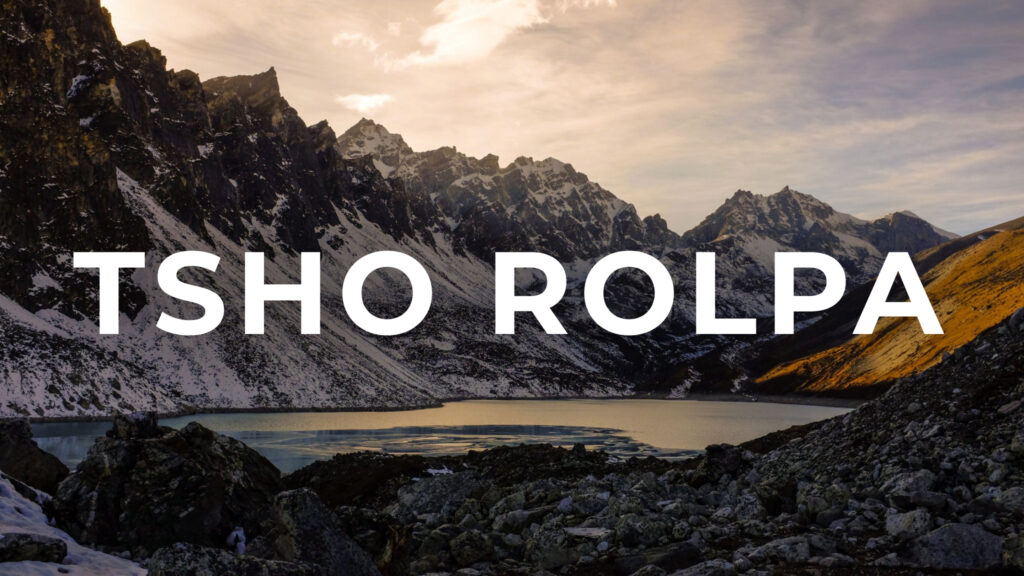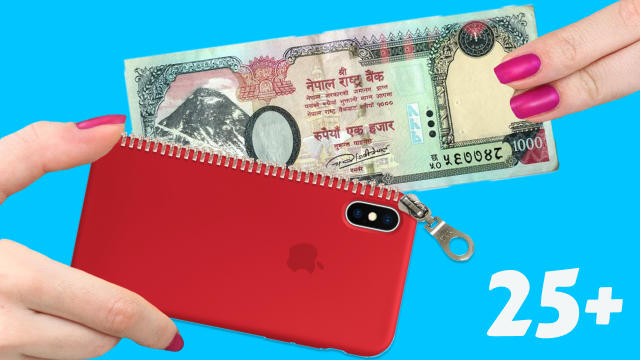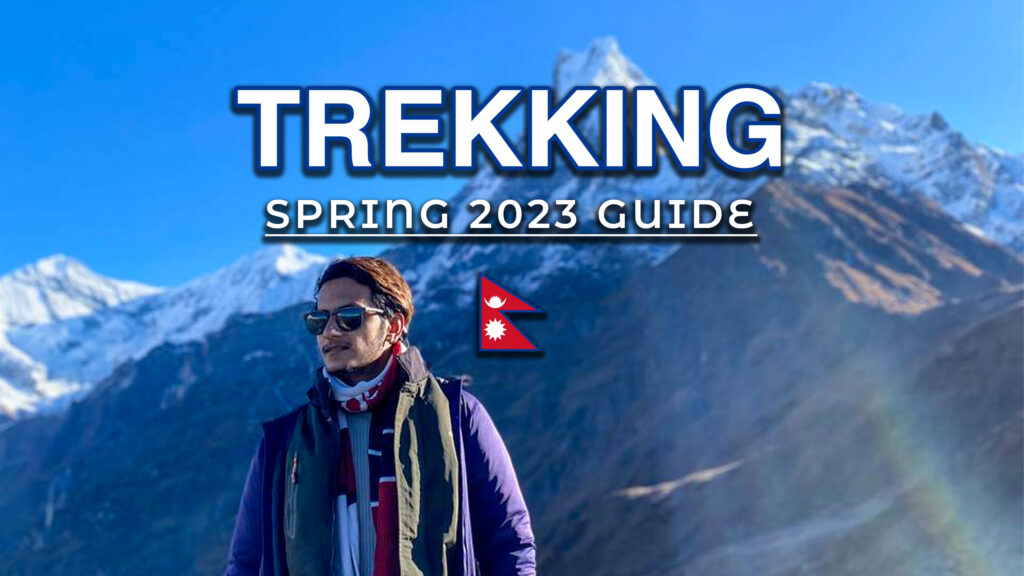Tsho Rolpa Trek Overview
The Tsho Rolpa Trek is a hidden gem for local trekkers looking to explore one of Nepal’s less-traveled paths. Starting from the vibrant city of Kathmandu, this 9-day trek takes you through the serene and unspoiled landscapes of the Rolwaling Valley, leading up to the stunning Tsho Rolpa Glacier Lake. This trek offers a perfect mix of natural beauty, cultural immersion, and physical challenge, making it an ideal getaway for those seeking a refreshing break from the hustle and bustle of city life.
One of the main attractions of this trek is Tsho Rolpa, one of the biggest glacier lakes in Nepal. Situated at an altitude of 4,580 meters, the lake is surrounded by majestic peaks, offering trekkers a breathtaking panorama of the Himalayas. The tranquility of the lake, combined with the stunning views, makes it a perfect spot for those looking to connect with nature.
The trek also offers an opportunity to experience the rich cultural heritage of the Rolwaling region. As you walk through Sherpa and Tamang villages, you’ll witness their unique way of life, traditional practices, and warm hospitality. These interactions provide a deeper understanding of the local culture and enhance the overall trekking experience.
The Tsho Rolpa Trek is more than just a journey through beautiful landscapes. It’s an adventure that tests your physical limits, rewards you with spectacular views, and leaves you with memories that last a lifetime. Whether you’re an experienced trekker or a nature enthusiast, this trek offers something special for everyone.
Tsho Rolpa Trek Highlights
- Discover the pristine Tsho Rolpa Glacier Lake.
- Experience the serene beauty of the Rolwaling Valley.
- Trek through picturesque Sherpa and Tamang villages.
- Enjoy breathtaking views of Gauri Shankar and other Himalayan peaks.
- Walk through diverse landscapes, from lush forests to high alpine terrain.
- Cross the challenging Tashi Lapcha Pass (5,755 meters).
- Immerse yourself in the local culture and traditions of the Rolwaling region.
Trek Attributes
- Max Elevation: 4,580 meters (Tsho Rolpa Lake)
- Min Elevation: 1,440 meters (Gongar Khola)
- No. of Days: 9 days
- Level of Difficulty: Moderate to Challenging
- Best Season: March to May, September to November
- Accommodation: Teahouses and lodges
- Budget: Approximately NPR 25,000 to NPR 30,000
Itinerary Overview
Day 1: Kathmandu (1,400 m) to Gongar Khola (1,440 m) – 8 hours’ drive
The journey begins with a scenic drive from Kathmandu to Gongar Khola, which takes about 8 hours. As you leave the city behind, you’ll pass through rural landscapes, terraced fields, and small towns, offering a glimpse of the traditional Nepali way of life. The drive, though long, is a wonderful opportunity to appreciate the diversity of Nepal’s geography.
Day 2: Gongar Khola (1,440 m) to Simigaon (2,000 m) – 4 to 5 hours trek
The trek kicks off with a relatively easy walk from Gongar Khola to Simigaon. The trail winds through lush forests, with the sound of the river accompanying you along the way. The hike is moderate, with a few uphill sections as you approach Simigaon, a village known for its Sherpa and Tamang culture. Here, you can explore the local lifestyle, visit a monastery, and enjoy the surrounding views of Gauri Shankar.
Day 3: Simigaon (2,000 m) to Donga (2,800 m) – 5 to 6 hours trek
As you leave Simigaon, the trail begins to climb steadily, passing through dense rhododendron and oak forests. The hike is more challenging today, with steep ascents, but the surrounding beauty makes it worthwhile. Donga is a small settlement, offering basic accommodation and a peaceful atmosphere. The day ends with views of snow-capped peaks, reminding you of the adventure that lies ahead.
Day 4: Donga (2,800 m) to Beding (3,690 m) – 5 to 6 hours trek
Today’s trek takes you deeper into the Rolwaling Valley. The trail continues to ascend, with the landscape becoming more rugged and alpine as you gain altitude. Beding, a traditional Sherpa village, is the largest settlement in the Rolwaling Valley. The village is rich in culture, and you can visit the local monastery or interact with the friendly villagers. The views of Gauri Shankar and other peaks dominate the skyline, creating a stunning backdrop.
Day 5: Beding (3,690 m) to Na (4,180 m) – 4 to 5 hours trek
Leaving Beding, the trail climbs gradually towards Na, the last settlement before reaching Tsho Rolpa Lake. The path becomes more barren, with fewer trees and more rocky terrain. Na is a small village with a handful of lodges, offering spectacular views of the surrounding mountains. The altitude here requires you to take it slow, making this a good spot for acclimatization.
Day 6: Na (4,180 m) to Tsho Rolpa Lake (4,580 m) – 3 to 4 hours trek
The trek from Na to Tsho Rolpa Lake is the highlight of the journey. The trail is relatively short but challenging due to the altitude. As you approach the lake, the terrain becomes more rugged, with glacial moraines and rocky paths. Tsho Rolpa Lake, with its deep blue waters surrounded by towering peaks, is one of the most beautiful and serene places in the Himalayas. It’s a perfect spot to rest, reflect, and enjoy the raw beauty of nature.
Day 7: Explore Tsho Rolpa Lake and acclimatization day
This day is dedicated to exploring the area around Tsho Rolpa Lake. You can take short hikes around the lake, visit the nearby glaciers, or simply relax and soak in the stunning views. The day also serves as an acclimatization day, helping your body adjust to the high altitude before you begin your descent.
Day 8: Tsho Rolpa Lake (4,580 m) to Beding (3,690 m) – 5 to 6 hours trek
After enjoying the tranquility of Tsho Rolpa Lake, you’ll retrace your steps back to Beding. The descent is easier, allowing you to take in the views at a more relaxed pace. The return to Beding offers a different perspective of the landscape, with changing light and angles revealing new aspects of the surrounding beauty.
Day 9: Beding (3,690 m) to Gongar Khola (1,440 m) – 6 to 7 hours trek
The final day of trekking takes you from Beding back to Gongar Khola. The trail descends steadily, passing through familiar villages and forests. As you make your way down, you’ll have time to reflect on the journey, the challenges faced, and the incredible sights seen. The trek ends with a sense of accomplishment as you arrive back at Gongar Khola, ready for the drive back to Kathmandu.
Day 10: Gongar Khola (1,440 m) to Kathmandu (1,400 m) – 8 hours’ drive
The last leg of the journey is the drive back to Kathmandu. The 8-hour drive offers one last chance to enjoy the rural landscapes of Nepal before returning to the hustle and bustle of the city. Back in Kathmandu, you can rest, celebrate your trek, and perhaps plan your next adventure.
Exploring the Surroundings of the Tsho Rolpa Trek
While the main focus of this trek is Tsho Rolpa Lake, the surrounding areas offer additional opportunities for exploration, each with its own unique culture, challenges, and beauty. Here are some highlights:
1. Rolwaling Village
Days to Add: 1 day
Altitude: 3,800 meters
Difficulty: Moderate; involves trekking through rugged terrain.
Culture:
Steeped in Sherpa culture, Rolwaling Village provides an authentic experience of life in one of the most remote parts of Nepal. The village is known for its traditional houses, yak pastures, and a monastery where you can learn about the spiritual practices of the locals.
Highlights:
- Experience traditional Sherpa culture.
- Visit a local monastery.
- Enjoy stunning views of the surrounding peaks.
2.Yalung Ri Base Camp
Days to Add: 1-2 days
Altitude: 4,750 meters
Difficulty: Challenging; involves steep ascents and rocky terrain.
Culture:
Yalung Ri is a popular trekking peak in the Rolwaling region. The trek to the base camp offers a deeper immersion into the high-altitude landscapes of the Himalayas.
Highlights:
- Close-up views of surrounding peaks and glaciers.
- Challenging high-altitude trekking.
- Experience the raw beauty of the Himalayas.
3.Tashi Lapcha Pass
Days to Add: 2-3 days
Altitude: 5,755 meters
Difficulty: Strenuous; requires technical climbing skills.
Culture:
Tashi Lapcha Pass connects the Rolwaling Valley with the Khumbu region. This trek is one of the most adventurous routes in the Himalayas, offering breathtaking views and a true sense of adventure.
Highlights:
- Cross one of the most challenging passes in the Himalayas.
- Unmatched panoramic views of the Himalayas.
- A true adventure for experienced trekkers.
Tsho Rolpa Trek Difficulty
The Tsho Rolpa Trek is considered moderate to challenging, making it suitable for trekkers with some experience. You’ll be trekking for 4 to 7 hours a day on varied terrain, including steep ascents and descents. It’s essential to be in good physical shape and have prior trekking experience to handle the demands of the trek. The trail is well-marked but can be strenuous, especially at higher altitudes where the air is thinner.
Preparation is key for this trek. Regular exercise, including cardio and strength training, will help build the endurance and stamina needed for long days of walking. Acclimatization days are built into the itinerary to help your body adjust to the higher elevations. Listening to your body and pacing yourself is crucial to avoid exhaustion and altitude sickness.
Altitude Sickness
Altitude sickness is a significant concern on the Tsho Rolpa Trek, especially as you ascend above 3,000 meters. Symptoms can include headaches, dizziness, nausea, and shortness of breath. It’s essential to acclimatize properly to prevent these symptoms. Taking it slow, staying hydrated, and eating a balanced diet are key strategies to help your body adjust to the altitude.
If you experience severe symptoms of altitude sickness, such as persistent headaches, confusion, or difficulty breathing, it’s crucial to descend to a lower altitude immediately. Inform your trekking guide and team about any symptoms you experience. Taking Diamox, a medication that helps prevent altitude sickness, can also be beneficial. Avoiding alcohol and smoking will further reduce your risk of altitude sickness. Always prioritize your health and well-being during the trek.
Concluding Remarks
The Tsho Rolpa Trek is an incredible journey that offers a mix of natural beauty, cultural richness, and physical challenge. From the serene Tsho Rolpa Glacier Lake to the warm hospitality of the local communities, every day on the trek brings new experiences and lasting memories.
Whether you’re trekking through the Rolwaling Valley, crossing the challenging Tashi Lapcha Pass, or exploring the tranquil villages, this trek provides a unique opportunity to immerse yourself in the heart of the Himalayas. The trek also teaches the importance of acclimatization, pacing yourself, and respecting your body’s limits, ensuring a safe and enjoyable journey.
When is the Best Time to Trek?
Here are the two best seasons for an amazing trekking experience:
Spring Season (April through May)
- The weather is mild with clear and sunny days.
- Perfect time to see beautiful flowers and blossoming trees at lower elevations.
- Famous for vibrant rhododendron blooms that add color to the landscapes.
End of Autumn (October through November)
- Clear, dry, and stable weather, ideal for trekking.
- Moderate temperatures with warm days and cool nights for comfortable trekking.
- Stunning views of the Himalayan mountains with high visibility and clear skies.
Keep these seasons in mind for the best trekking experience here!
What are the Estimated Price Range for Essential Trekking Gears? (Budget Friendly Edition)
If you’re planning your first trek in Nepal, here’s our best estimate for the cost of essential trekking gear:
- Trekking Backpack (40+5L): 3,000 NPR
- Trekking Boots (Goldstar): 2,500 NPR
- Down Jacket: 3,500 NPR
- Rain Coat: 600 NPR
- Warm Trousers: 1,500 NPR
- Sweater: 1,500 NPR
- Thermocoat Set (Inners): 1,000 NPR
- Trekking Stick: 500 NPR
- Warm Gloves: 300 NPR
- Winter Cap: 300 NPR
- Warm Socks: 300 NPR
- Scarf/Muffler: 500 NPR
- Water Bottle: 300 NPR
Bonus
10 quick Travel Tips:
- Offline Maps: Download areas on Google Maps for offline use to navigate without data.
- Power Bank: Pack a portable power bank with at least 20,000mAh to keep your devices charged.
- Eco-Friendly: Dispose of waste properly and practice eco-friendly tourism for good karma.
- Homestays: Stay in local homestays for an authentic and affordable experience.
- Events: Travel during festivals or events to enjoy local culture while sightseeing.
- Local Guide: Contact a local friend or guide for insider tips and hidden gems.
- Group Funds: Collect group expenses before traveling to avoid hassle during the trip.
- Money Belt: Use a fanny pack or money belt to keep your money safe and accessible.
- Be ready for the Unexpected: Be open to new experiences and enjoy the journey.
- Create Memories: Focus on making memories and having new experiences, not just ticking off items.
FAQs
1. How fit do I need to be for trekking?
Trekking in Nepal can be physically demanding. It’s important to be in good physical shape. Regular exercise, such as walking, running, or hiking, can help build the necessary endurance and stamina.
2. How should I acclimatize to high altitudes?
Many trekking routes in Nepal involve high altitudes, which can lead to altitude sickness. Gradual acclimatization is key. Take rest days and ascend slowly to allow your body to adjust to the altitude.
3. What gear do I need for trekking?
Proper trekking gear is essential for a comfortable and safe trek. You should bring good hiking boots, warm clothing, waterproof gear, and a backpack to carry your belongings.
4. How important is hydration and nutrition during the trek?
Staying hydrated and well-nourished is very important. Bring a water bottle and consider carrying energy bars or snacks to keep your energy levels up during the trek.
5. Do I need permits for trekking?
Some trekking routes in Nepal require trekking permits. It’s important to obtain the necessary permits before starting your trek. Check the requirements for your specific route.
6. Should I get travel insurance for trekking?
Yes, trekking in Nepal can be unpredictable, and accidents or injuries can happen. It’s wise to get travel insurance to cover any medical expenses or emergency evacuations that may be needed.


